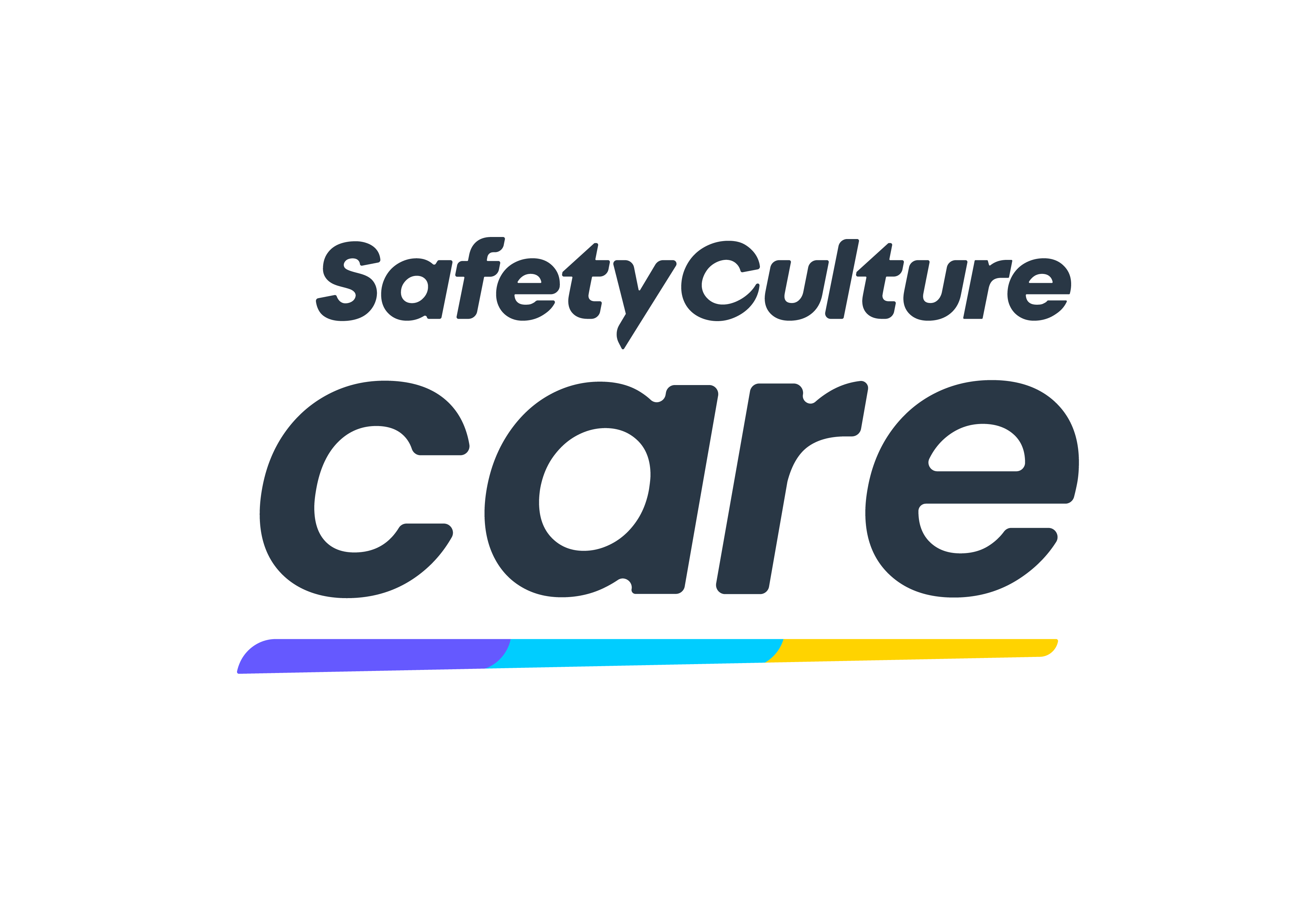Title Page
-
Site conducted
-
Mitigating risk starts with awareness of the tools, processes and procedures available to reduce risk.
Answer as accurately as you can, the information shared in this inspection is focused solely on helping businesses improve their ability to address fire risk through knowledge, training and maintenance. -
The maintenance of fire and life safety equipment is a mandatory obligation on business operators across Australia.
Whilst there are a few minor differences between states, we've compiled a simple checklist to quickly assess your equipment.
AS 1851 is the Australian Standard for maintenance of Fire Protection Systems and Equipment, a component of the Building Code of Australia. -
Date of inspection
-
Person conducting the inspection
-
Address of the property where the inspection is conducted
📋 Instructions on how to complete the inspection
-
Instructions
-------------------
1. Complete the following sections: Fire Detection Systems; Emergency Response Plans and Evacuation; Fire Brigade Response Times; Fire Extinguishers, Fire Hose Reels and Blankets.
2. Answer "Yes", "No", "N/A" for the relevant questions. Add any photos and notes by clicking on the paperclip icon.
3. To create a corrective action click on the paperclip icon and then "Action", provide a description, assign to a member, set priority and due date
4. Complete audit by providing additional comments and feedback.
5. Share your report by exporting as "PDF", "Word", "Excel" or "Web Link" -
If you're unsure or have any questions about what is in this inspection, reach out to your broker or to the team at Mitti: https://www.mitti.com.au/contact/
🔥 Fire Detection Systems
-
What alerts are installed to detect the presence of a fire? When a fire occurs, warning systems are key to reducing harm and preventing loss of life.
Smoke and heat detectors are an effective way of early warning of a fire within the property. Fire detection systems enable quick response to a fire within your business and safe evacuation if required. -
Fire Detection Systems can include battery-powered or hardwired smoke detectors through to full monitored systems which notify the fire brigade of an alarm activation. Check if your building has fire detection systems installed.
For places outside your business premises that may affect you in the event of fire and you don't have access to (e.g. residential units, neighbouring commercial property, shared common property, etc.), please check with your agent, strata or building manager. -
Is there an Automatic Fire Detection System installed in the building e.g. smoke, thermal or heat detectors?
-
If your Automatic Fire Detection System is battery powered have all the batteries been changed in the past 6 months?
-
Ensure batteries are changed every 6 months as recommended under Australian Standard AS 1851
-
Are the detectors installed to all areas of the building?
-
Look for the fire panel in your building - it may look similar to this.
-
Have a look at the fire panel - Is the fire panel online and showing no faults (faults are typically identified on the fire panel by orange or red lights)?
-
Have your fire contractor attend the site and rectify all faults
-
Is your fire panel inspected every month by your fire protection contractor?
-
Please ensure your fire protection contractor tests the system as required and records the results in an appropriate logbook. The logbook should be available for inspection at all times. It is required that the installed early warning fire detection system (the smoke/heat detectors and fire panel) is tested on a monthly basis by your fire protection contractor. This is a requirement of AS1851, and more importantly, will ensure the system operates as designed and allow for safe egress by all occupants of the building in a fire situation.
-
Find the fire panel inspection logbook.
-
Take a photo of the last entry in the log book, which should be found inside the fire panel - this will help you keep a log of the maintenance schedule in iAuditor
-
Lock up the fire panel before moving on.
-
Arrange for the Automatic Fire Detection System to be installed in the building.
-
Are there sprinklers/drenchers installed in the building?
📝 Emergency Response Plans and Evacuation
-
In case of a fire, the Emergency Response Plan will assist in the safe evacuation of you, your staff, visitors and customers.
You can find out more here: https://www.safeworkaustralia.gov.au/safety-topic/managing-health-and-safety/emergency-plans-and-procedures/overview -
Are Evacuation & Emergency Procedures and maps installed in common areas of the building?
-
An Emergency Evacuation Plan should be implemented for the property to ensure that, in an emergency, the property can be effectively evacuated by all occupants. The Emergency Evacuation Plan should be developed in accordance with AS3745-2010 and include evacuation diagrams placed in common areas throughout the building. Evacuation procedures should be tested annually to ensure they are effective. A Fire Evacuation & Emergency Procedures may look similar to the one on the picture.
-
Good job! Remember to test the evacuation procedures annually to ensure they are effective.
-
Have you run fire drills and testing of evacuation procedures within the past 12 months?
-
Please ensure fire drills and testing of evacuation procedures are conducted at least once annually
-
Is there Occupant Warning System installed in the building - fire alarm or evacuation warning system?
🧯 Fire Extinguishers, Fire Hose Reels and Fire Blankets
-
Take a walk around your building to understand what fire equipment has been installed and check its maintenance. For places outside your business premises that may affect you in the event of a fire and you don't have access to (e.g. residential units, neighbouring commercial property, shared common property, etc.), please check with your agent, strata or building manager.
Fire extinguishers
-
Are there fire extinguishers installed in the building?
-
Are the fire extinguishers mounted on a fixed wall?
-
Make sure fire extinguishers are mounted on a fixed wall to ensure safety.
-
Check if the signs installed matches the sticker on the fire extinguishers.
-
Do the fire extinguishers installed match the type indicated by the sign?
-
Make sure correct signage is installed - example of a fire extinguisher sign.
-
Please take a photo of the sign of at least one of the fire extinguishers.
-
Are fire extinguishers installed in accessible areas not obstructed by stored materials?
-
Make sure fire extinguishers can be easily accessed at all times and are not obstructed by any stored materials.
-
Have a look at the fire extinguishers, find the metal tag on them and check whether they have been inspected and punched within the past 6 months.
-
Have all the fire extinguishers been inspected by a fire protection contractor within the last 6 months?
-
Please ensure all fire extinguishers installed at your site are inspected 6 monthly, and that the contractor punches the yellow tags attached to each equipment item to indicate that the relevant tests/inspections have been completed. It is a requirement of AS1851 that all first aid fire fighting equipment (eg. hydrants, hose reels, extinguishers and fire blankets) is tested/inspected by a fire protection contractor on a 6 monthly basis.
-
Good job! Remember to get all fire extinguishers installed at your site inspected 6 monthly, and that the contractor punches the yellow tags attached to each equipment item to indicate that the relevant tests/inspections have been completed. It is a requirement of AS1851 that all first aid fire fighting equipment (eg. hydrants, hose reels, extinguishers, and fire blankets) is tested/inspected by a fire protection contractor on a 6 monthly basis.
-
Engage a licensed fire protection contractor to inspect and install appropriate protection. You can locate a fire protection contractor here http://www.fpaa.com.au/.
Hose reels
-
Here's an example of a hose reel
-
Are there hose reels installed in the building?
-
Are all hose reels installed in accessible areas not obstructed by stored materials?
-
Make sure hose reels can be easily accessed at all times and are not obstructed by any stored materials.
-
Have a look at the hose reels, find a metal tag on them and check whether they have been inspected and punched within the past 6 months.
-
Have all the hose reels been inspected by a fire protection contractor within the last 6 months?
-
Please ensure all hose reels installed at your site are inspected 6 monthly, and that the contractor punches the yellow tags attached to each equipment item to indicate that the relevant tests/inspections have been completed. It is a requirement of AS1851 that all first aid fire fighting equipment (eg. hydrants, hose reels, extinguishers and fire blankets) is tested/inspected by a fire protection contractor on a 6 monthly basis.
-
Good job! Remember to get all hose reels installed at your site inspected 6 monthly, and that the contractor punches the yellow tags attached to each equipment item to indicate that the relevant tests/inspections have been completed. It is a requirement of AS1851 that all first aid fire fighting equipment (eg. hydrants, hose reels, extinguishers, and fire blankets) is tested/inspected by a fire protection contractor on a 6 monthly basis.
Fire blankets
-
Are there fire blankets installed in the building?
-
Are the fire blankets mounted on a fixed wall?
-
Make sure ffire blankets are mounted on a fixed wall to ensure safety.
-
Are the fire blankets installed in accessible areas and not obstructed by stored materials?
-
Make sure fire blankets can be easily accessed at all times and are not obstructed by any stored materials.
-
Have a look at the fire blankets, find a metal tag on them and check whether they have been inspected and punched within the past 6 months.
-
Have all the fire blankets been inspected by a fire protection contractor within the last 6 months?
-
Please ensure all fire blankets installed at your site are inspected 6 monthly, and that the contractor punches the yellow tags attached to each equipment item to indicate that the relevant tests/inspections have been completed. It is a requirement of AS1851 that all first aid fire fighting equipment (eg. hydrants, hose reels, extinguishers and fire blankets) is tested/inspected by a fire protection contractor on a 6 monthly basis.
-
Good job! Remember to get all hose reels installed at your site inspected 6 monthly, and that the contractor punches the yellow tags attached to each equipment item to indicate that the relevant tests/inspections have been completed. It is a requirement of AS1851 that all first aid fire fighting equipment (eg. hydrants, hose reels, extinguishers, and fire blankets) is tested/inspected by a fire protection contractor on a 6 monthly basis.
🚒 Fire Brigade and Response Times
-
How long might it take for the nearest fire brigade to attend your premises?
If you are unsure, check with your local fire brigade &/or website of the fire rescue service in your state or territory for the nearest fire station.
ACT: https://esa.act.gov.au/contact-us/fire-and-rescue-contacts
NSW: https://www.fire.nsw.gov.au/page.php?id=9205
NT: https://www.pfes.nt.gov.au/contact-us/fire-and-rescue-general-enquiries
QLD: https://www.qfes.qld.gov.au/contact-us/find-us
SA: https://www.mfs.sa.gov.au/about-us/fire-stations/
TAS: http://www.fire.tas.gov.au/Show?pageId=colWhereIsMyLocalFireStation
VIC: https://www.frv.vic.gov.au/response-area -
What's the estimated time for the nearest fire brigade to arrive at your premises?
-
Look for fire hydrants inside and outside the building - they may look similar to the one on the picture.
-
Are there fire hydrants installed internal and/or external to the building accessible to the fire brigade?
🏁 Final Comments
-
Additional Comments - Is there anything else you would like us to know?
-
How did you find the process of completing Mitti Fire & Life Safety Equipment Inspection via iAuditor?
-
What did you like about your experience?
-
If you have any other questions in regards to the template please contact us at hello@mitti.com.au
-
What would make the process easier for you?
-
What would make the process easier for you?
-
What would make the process easier for you?
























